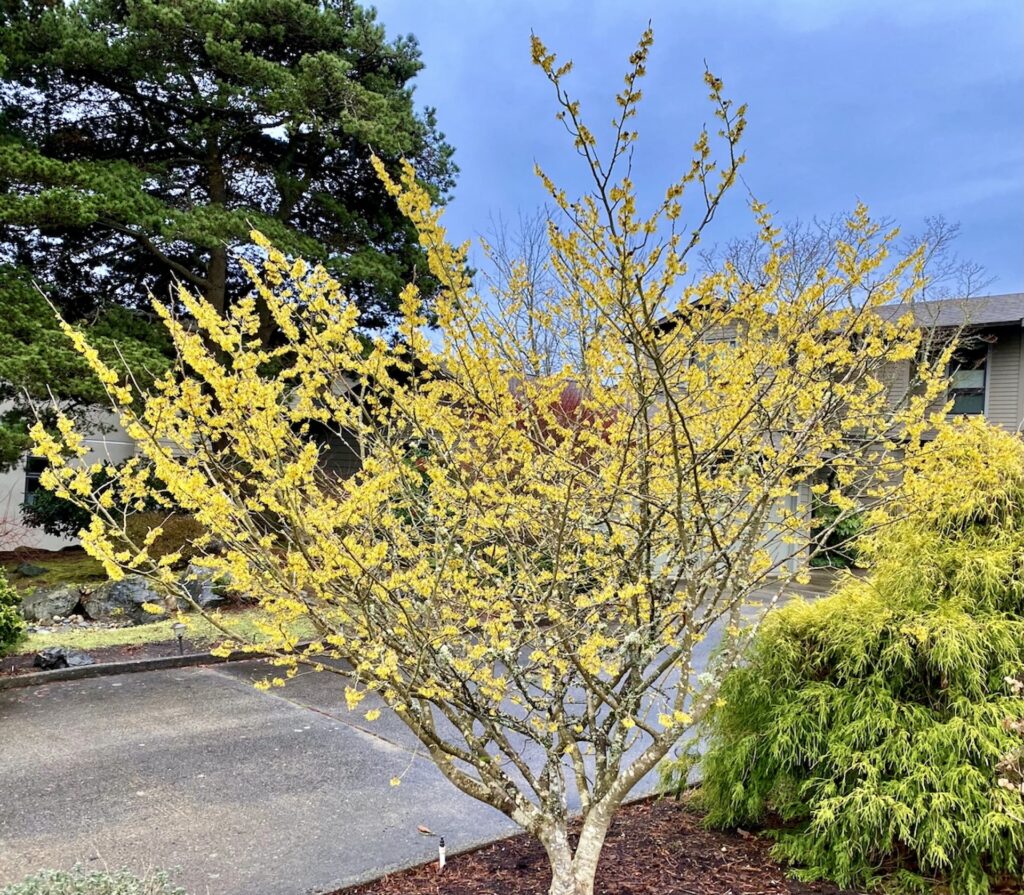After the leaves fall in autumn, some deciduous trees fade into the background until they leaf out again in the spring. Others shed their leaves revealing striking bark, berries, and flowers that stand out on bare branches. These trees make excellent focal points that add a new dimension to a winter garden. Because they have no downtime, they are also a good choice for small gardens where space is limited and multi-season interest is a must.

If you want to add interest to your garden and create stunning winter views, there are many deciduous trees to consider. Below are some reliable choices that are easy to grow and don’t get too big.
Hamamelis x intermedia
The witch hazel (Hamamelis sp.) is one of the first trees to bloom in late winter. Its bare branches hold small, tufted flowers that look almost like confetti. There are many varieties and cultivars of witch hazel. Flower color varies from a warm golden-yellow (Hamamelis x intermedia ‘Arnold Promise’) to deep red (Hamamelis x intermedia ‘Diane’). An open vase-shaped canopy and a horizontal branching pattern give this small tree a dramatic silhouette. Some varieties mature to be as wide as they are tall with room underneath the canopy to plant small shrubs, perennials or ground cover. This tree is a cheerful beacon signaling spring will come again.
Acer griseum
The paperbark maple (Acer griseum) has a rounded canopy and an angular horizontal branching pattern giving it an architectural look. Its smooth, cinnamon-colored bark peels in thin layers giving its trunk a dynamic color and texture. Acer griseum stands out during wintertime when its bark glows in the sun contrasting with evergreen foliage or a dusting of snow. This tree looks warm even on the coldest winter day.
Cercis canadensis
The Eastern redbud (Cercis canadensis) has small sweet pea-like rose-purple flowers that bloom profusely on bare branches before the foliage emerges in early spring. The intense color and profusion of the flowers make this tree a stand out among flowering trees. A neat, rounded habit and its moderate size make the eastern redbud a good street tree or garden specimen. Cultivars vary in form and foliage, but the color of the flower is consistent. This tree has it all.
Now is a good time access the parts of your garden that are most visible during wintertime and plan upgrades that will add some excitement at this time next year.
Need more ideas? Contact me for a design consultation to learn about landscape design and how to maximize the impact of plantings for any spot in your garden.
